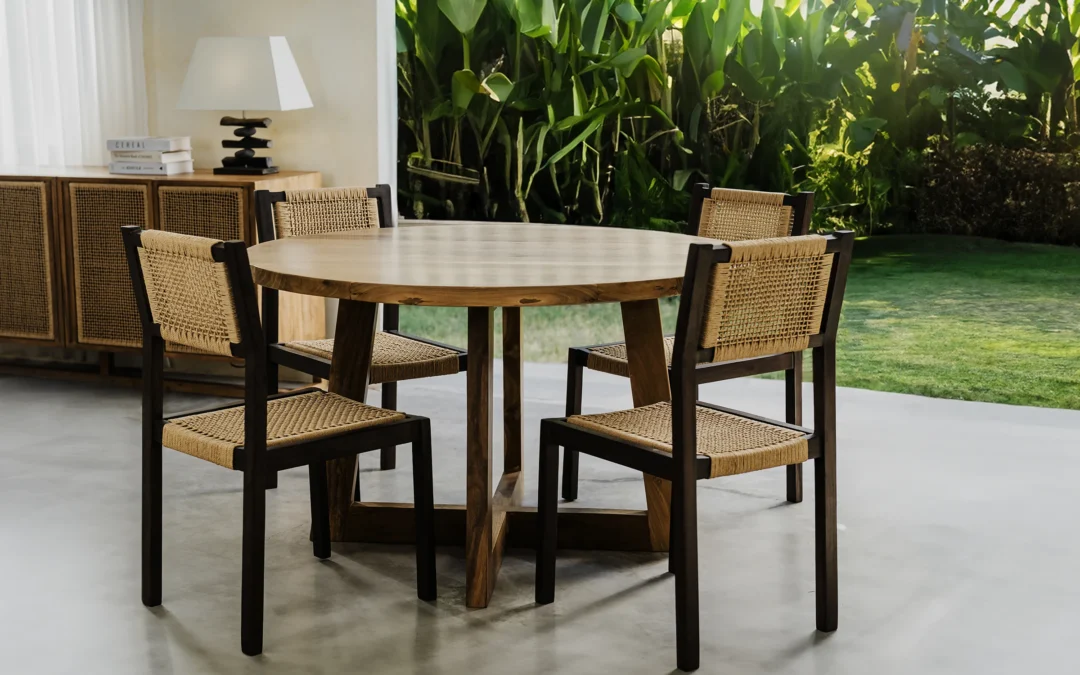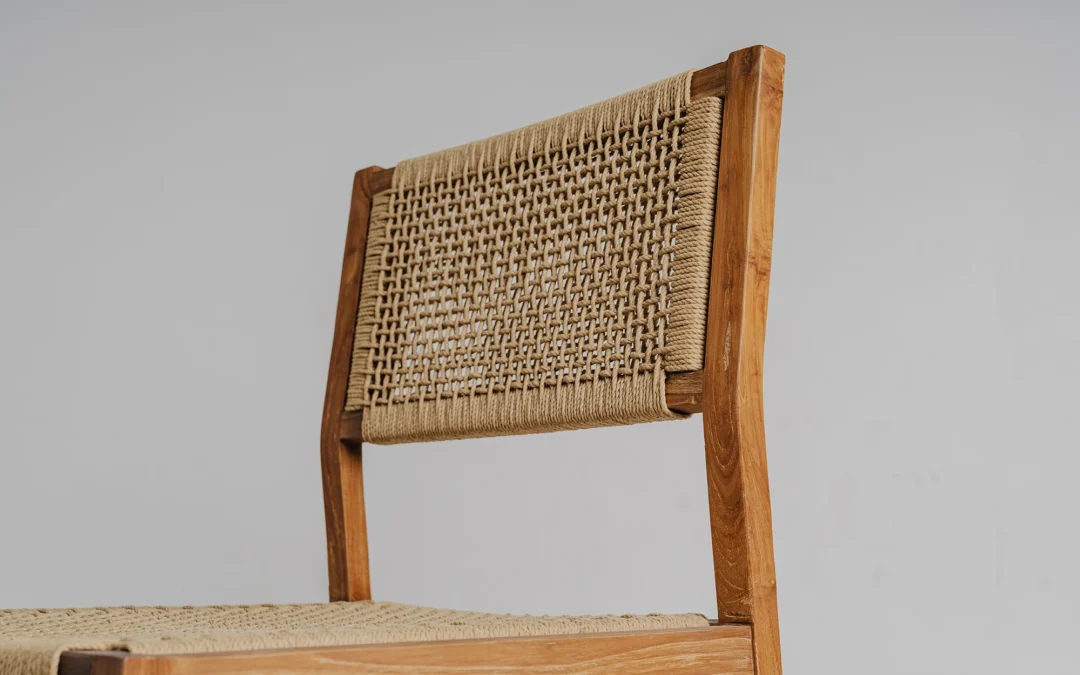Ever wondered what it takes to turn century-old timber into stunning and strong as hell reclaimed teak furniture? Here’s how we reclaim, restore, and transform teak from old Javanese homes into furniture that lasts a lifetime.
Unlike plantation timber that is marketed as “sustainable” (blatant greenwashing right there folks), reclaimed teak is the real deal. It’s strong, full of character, and doesn’t come at the cost of cutting down more forests.
When you buy reclaimed teak furniture from us, or get us to build your custom pieces (or maybe even your deck), you are choosing something that has already stood the test of time. This timber has weathered decades, sometimes even a century, in the elements. That’s why reclaimed teak is so hard, durable, and perfect for building furniture that’s going to last many more years to come.
So how do we salvage old teak from abandoned structures in Java and turn it into beautiful furniture for homes and businesses across the world? We’re now going to walk you through the process step by step.
Step 1: Reclaiming – Where It All Begins
Most of the time we start in villages in Central Java, like Gunung Kidul, where traditional Javanese homes called joglo or limasan still stand. These houses were built decades ago, often using teak from old-growth forests. Back then, timber was naturally seasoned over decades in the open air. No kilns or shortcuts like what’s used for new timber. The result is wood that is incredibly hard and resistant to warping or cracking.
As families modernise and switch to concrete houses with air conditioning, these beautiful wooden homes are often abandoned or dismantled. And that’s where we come in. We work directly with local families and their communities to carefully dismantle these structures and salvage the best pieces of timber.
The largest beams and columns usually come from the frame of the house. These are the strongest and oldest pieces, perfect for tabletops, beds, and large furniture items. The smaller components, like rafters and roof beams, are just as valuable for chair legs, drawers, and accents.
Nothing goes to waste. If any timber can’t be used for furniture, we leave it behind for the local village to repurpose as firewood or construction material. The only thing that does not get reused is the old clay tiles, which have already done their job.
This first stage is not just about collecting wood. It’s about preserving history, reducing waste, and working hand-in-hand with the communities who have seen these houses age.
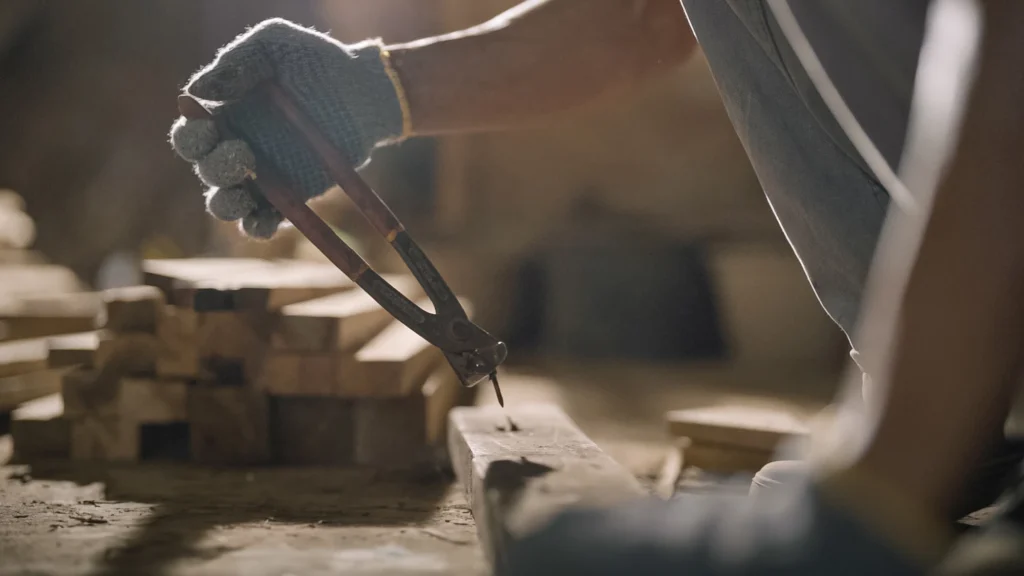
Step 2: Denailing – Back to Basics
Once the reclaimed timber arrives at our workshop, the first thing we do is remove every nail. This might sound simple, but it’s one of the most important steps. Leaving metal in the wood could destroy our saw blades or ruin the final product.
Our team checks every plank carefully, making sure the timber is clean and ready for the next stage.
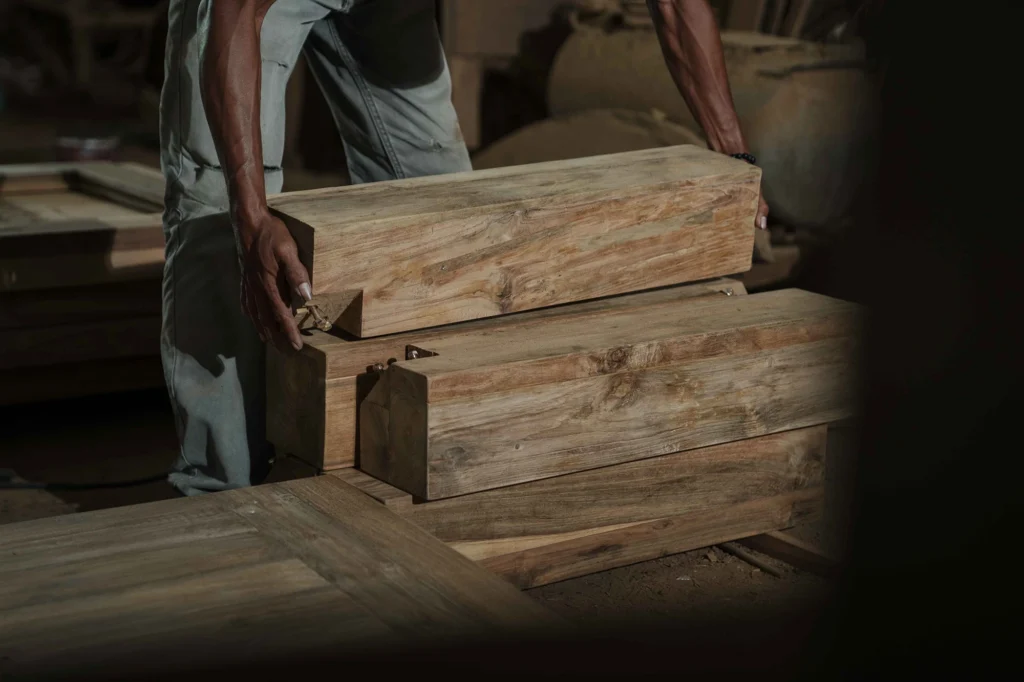
Step 3: Profiling – Giving Shape to the Timber
After denailing, we move on to profiling. This is where the timber is cut down into workable pieces and squared off so it looks and behaves like standard timber. Profiling also means checking for structural integrity and making sure each piece meets our quality standards.
At this stage, reclaimed teak starts to look less like an old house beam and more like the raw material for something amazing.
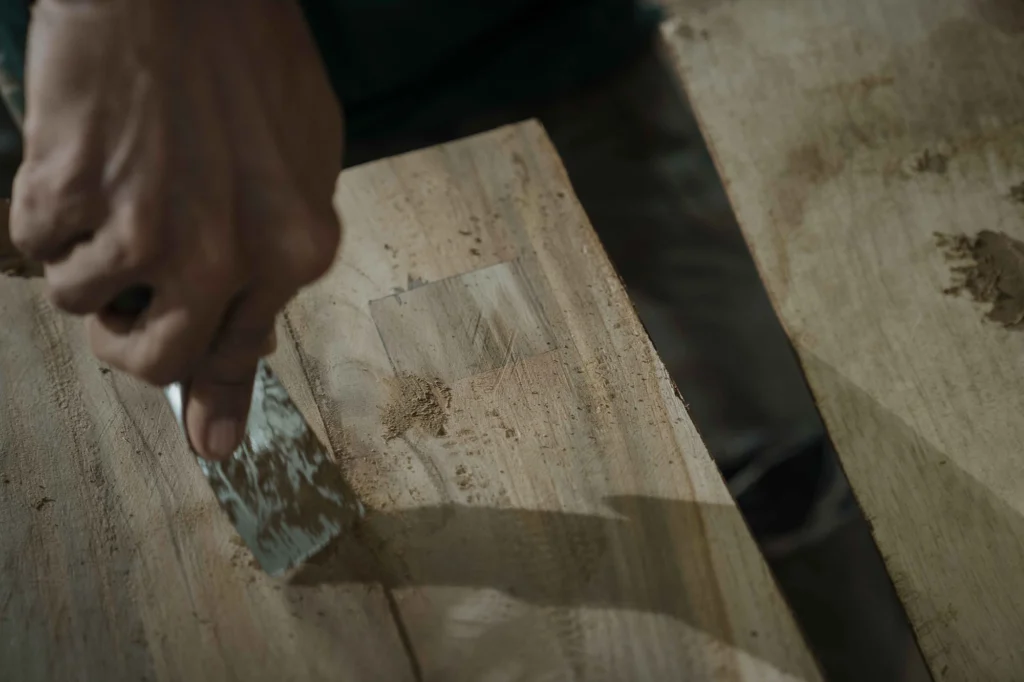
Step 4: Wood Filling – Repairing While Respecting the Story
Old timber often has small cracks or nail holes that tell the story of its past life. We actually love these imperfections, but we also make sure they do not affect the strength or durability of the furniture.
That is where wood filling comes in. We carefully fill holes and repair minor defects so that the timber is strong and ready for joinery. This step does not take away from the character of the wood. In fact, these subtle marks are what make reclaimed teak furniture unique and authentic.
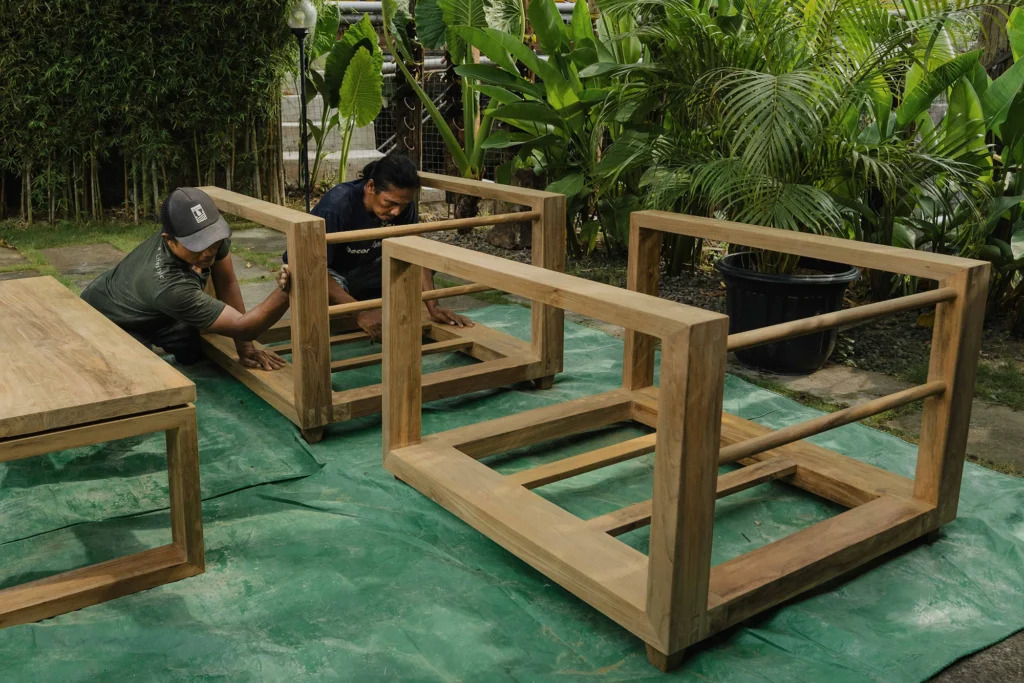
Step 5: Finishing – Bringing Out the Beauty
Next, the timber goes through sanding and finishing. This is where reclaimed teak really shines. Its grain, color, and natural texture come to life with the right finish.
We only use water-based, environmentally friendly finishes. Whether you want the raw teak look or something darker and moodier, our finishes highlight the beauty of the wood without harmful chemicals.
Finishing is about more than looks. It also protects the timber, ensuring that your furniture is ready to withstand years of use while staying beautiful.
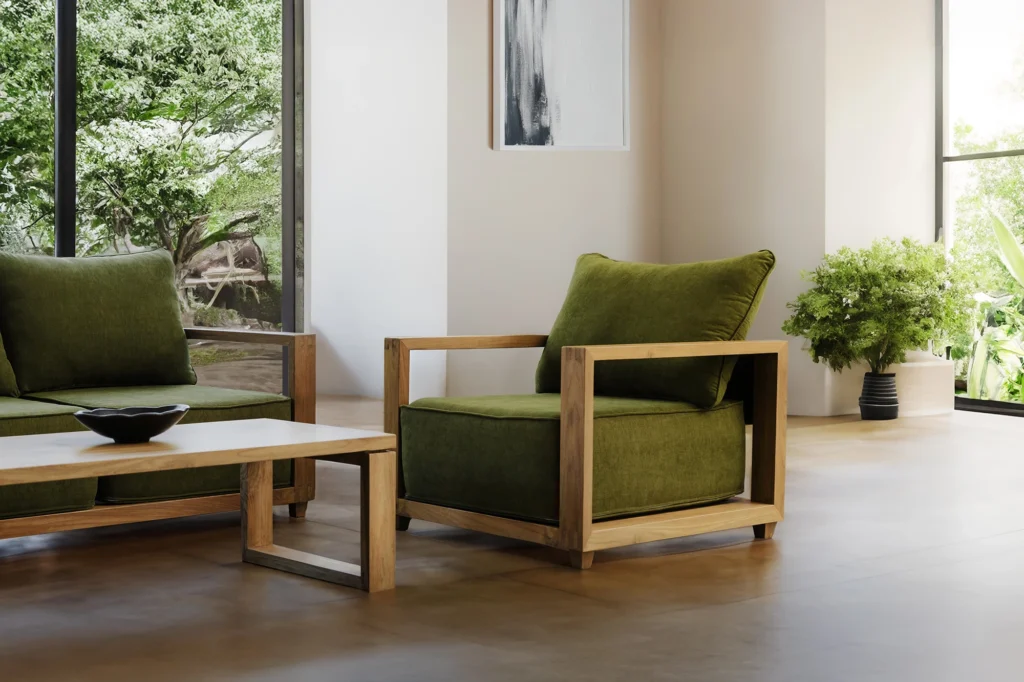
Step 6: Final Products – From Old Timber to Timeless Furniture
After finishing, the reclaimed timber is ready to become furniture. This could be a custom-designed dining table, a sleek modern chair, a rustic coffee table, or a full living room set. Whatever it becomes, every piece is built to last for decades.
This is the part we love most: seeing old timber transformed into something new. Each item carries a story that no new timber can match.
Why Choose Reclaimed Teak Furniture?
Choosing reclaimed teak is about much more than aesthetics. It’s about genuine sustainability. Plantation timber is often marketed as eco-friendly, but the reality is much different. Plantations are usually monocultures that take decades to mature and often damage ecosystems. If you’ve got a piece of furniture that started with cutting down a tree, wherever it’s growing, then is it really sustainable? Not a chance.
Reclaimed wood, on the other hand, uses what already exists. No new trees are cut down. No biodiversity is destroyed. By reclaiming timber, we reduce waste and keep a piece of history alive in your home.
Final Thoughts
Every step in this process matters. From dismantling old Javanese houses to profiling, filling, and finishing in our workshop, we are committed to doing things the right way.
For us, the best part is that feeling of circularity—taking something old and making it new again. Knowing the impact of plantation forestry and how often “sustainable” timber isn’t really sustainable makes us even more confident in what we do.
So the next time you run your hand over a Nusantara Lifestyle table or lean back in one of our chairs, know this: that piece of furniture has lived a life before yours, and now it has another.
If you want to come along for a ride with us to reclaim some timber, take a look at the film we made to document all the steps.
Ready to bring the beauty of reclaimed teak into your home or project? Explore our Alami collection of reclaimed teak furniture or Akar range of flooring, decking and cladding — or talk to us about custom designs today.



